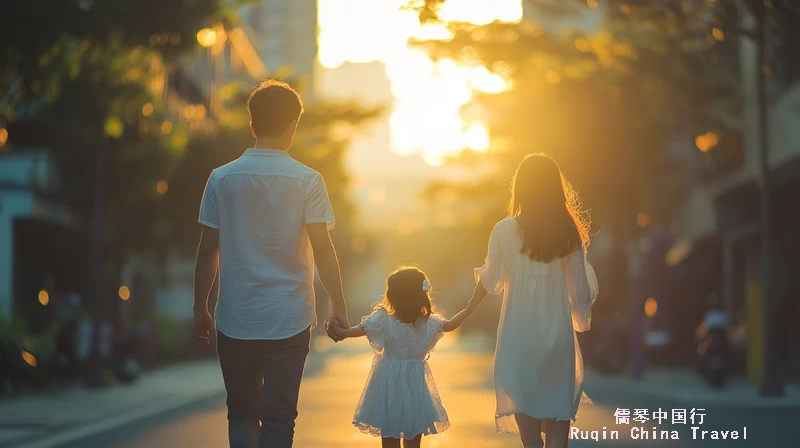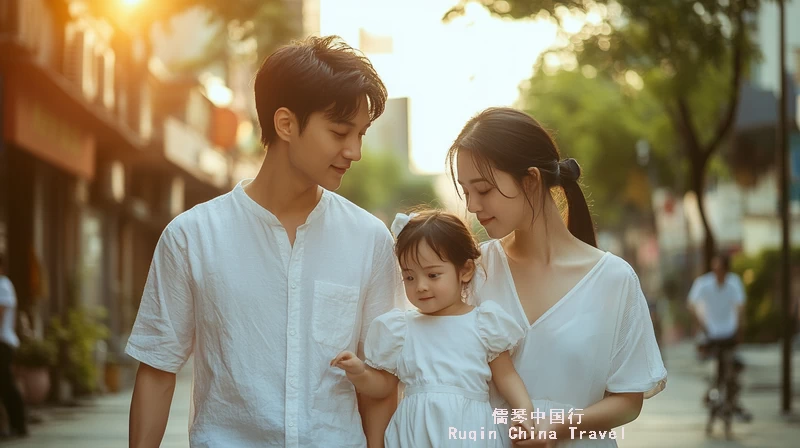For foreign visitors seeking to understand Chinese culture, knowing about China’s One-Child Policy and its impact provides valuable insight into Chinese family life, demographics, and societal dynamics. This guide delves into the history, social impact, and current consequences of the One-Child Policy, exploring how it has shaped Chinese society and the challenges that remain.
China’s One-Child Policy was one of the most controversial population control measures in modern history. Implemented in 1980 and ended in 2016, this policy aimed to curb rapid population growth, but it profoundly changed Chinese society in ways that are still felt today.
History of China’s One-Child Policy
In the 1970s, China’s population was growing at an unsustainable rate. To address this, the government introduced strict population control measures, culminating in the One-Child Policy in 1980. Leaders believed that controlling the population was essential for economic growth, as limited resources and rapid industrialization posed significant challenges. By limiting most families to only one child, China hoped to reduce poverty and improve living standards.

At first, the policy was seen as a temporary measure. However, it remained in effect for over three decades, with only slight adjustments over the years. Rural families, ethnic minorities, and couples whose first child had disabilities were allowed to apply for exemptions. Nonetheless, the policy was rigorously enforced, especially in urban areas, where families faced fines, job loss, and even forced abortions if they violated the rule. Today, China’s One-Child Policy and its impact are seen as both transformative and challenging, as its effects ripple through generations.
The Social Impact of China’s One-Child Policy
One of the most immediate social impacts of the One-Child Policy was a shift in family structure. Traditionally, Chinese families were multi-generational, with several siblings, cousins, and extended relatives. With the policy, however, families became smaller and often centered around a single child. As a result, the “four-two-one” structure emerged, where one child supports two parents and four grandparents. This structure has created significant pressure for the younger generation, who must manage family expectations while caring for aging relatives.
This policy also gave rise to the phenomenon of “little emperors.” Without siblings, many children received undivided attention from their parents and grandparents, leading to a generation of only children often perceived as overly indulged. While this stereotype is not universally true, it highlights the unique social pressures created by the policy. The intense focus on a single child has also led to high educational expectations, with families often pushing their children to excel academically to secure a better future.
Economic Impact of the One-Child Policy
The One-Child Policy undoubtedly influenced China’s economic landscape. By reducing birth rates, the government redirected resources to focus on improving education, healthcare, and infrastructure, which ultimately helped China transition to a modern economy. Additionally, fewer dependents allowed families to accumulate more savings and focus on career growth.
However, there were negative economic consequences as well. As birth rates dropped, the country began to age rapidly. Today, China faces a major demographic challenge: an aging population without a large enough young workforce to support it. This imbalance places strain on social welfare systems, healthcare, and retirement funds, as fewer workers contribute to the economy while an increasing number of retirees require support.
China’s One-Child Policy and its impact have therefore shaped economic policies for the future. With fewer people entering the workforce, the government now encourages families to have more children to balance the demographic structure. This shift highlights how the policy’s long-term consequences continue to influence China’s economy.
Gender Imbalance and Cultural Effects
Another unintended consequence of the One-Child Policy was a significant gender imbalance. In traditional Chinese culture, families have long preferred sons, viewing them as heirs who would continue the family line and provide support in old age. As a result, many families opted for sex-selective practices, leading to a higher ratio of boys to girls.
This gender imbalance has created several issues. Many men face difficulties finding marriage partners, which has led to what some call a “marriage squeeze.” This shortage of women has also increased social pressures, with some men unable to marry due to the limited number of available women. The cultural effects of this imbalance have sparked broader conversations in China about gender roles, family expectations, and the need for gender equality.
The policy’s gender imbalance has also prompted changes in legal and social approaches to women’s rights. There is growing awareness and action toward achieving gender equality, with initiatives to support women in education, business, and other fields. Nevertheless, the impact of the One-Child Policy on gender dynamics remains complex, as it has changed the way people think about marriage, family, and the roles of women in society.
Impact on Aging Population and Elder Care
One of the most pressing issues resulting from the One-Child Policy is the aging population. With fewer children born, China now has a high proportion of elderly citizens compared to younger people. This demographic shift has placed enormous pressure on the healthcare system and on families who are responsible for caring for aging relatives.
The “four-two-one” family structure means that one child may be responsible for supporting two parents and four grandparents. This responsibility often includes financial, physical, and emotional support, which can be overwhelming. Many families now struggle to balance work commitments with elder care, a challenge that grows as the population ages.
As a result, elder care has become a significant social concern in China. In response, the government has implemented policies to improve healthcare access for the elderly and encouraged the development of senior care facilities. However, this solution is not yet fully effective, as the cultural value of family-based elder care persists. The impact of the One-Child Policy on elder care demonstrates the complex interplay between tradition and modern challenges in Chinese society.
Transition to the Two-Child Policy
Recognizing the issues created by the One-Child Policy, China officially shifted to a Two-Child Policy in 2016. The government hoped that allowing families to have two children would balance the population structure, support the aging population, and increase the future workforce. Despite this change, however, birth rates have not increased significantly.
Many young couples are now hesitant to have more than one child, or even to have any children at all. The reasons are varied, including the high cost of living, career pressures, and the desire for a better quality of life. For instance, raising a child in China often requires significant financial investment in education, healthcare, and extracurricular activities. As a result, many couples feel that having more than one child would be financially and emotionally challenging.
This reluctance to have more children has led the government to implement policies to encourage larger families. Incentives like extended parental leave, housing subsidies, and tax breaks have been introduced, though their effectiveness remains uncertain. This shift highlights how China’s One-Child Policy and its impact continue to shape modern policies, even as the government attempts to undo some of the policy’s unintended consequences.
Social and Family Dynamics After the One-Child Policy
China’s One-Child Policy has had lasting effects on family dynamics and social expectations. For instance, today’s youth—many of whom are only children—often face immense pressure to succeed academically and professionally. Many parents and grandparents invest all their resources and hopes into one child, leading to high expectations and, at times, intense pressure.
At the same time, the policy has created a generation with unique social experiences. Growing up without siblings, many only children developed closer bonds with friends and extended family members. Additionally, the policy’s restrictions have fostered a strong sense of independence among many young adults, who have become accustomed to making major life decisions on their own.
The One-Child Policy has also changed family planning conversations among younger generations. While traditional Chinese culture values large families, many young people today prioritize financial stability and personal fulfillment over having multiple children. As a result, family structures in China are evolving, with smaller family sizes becoming more normalized.
The Cultural and Psychological Effects on Chinese Youth
The impact of the One-Child Policy on Chinese youth has also influenced the culture in significant ways. Many young adults, especially in urban areas, grew up as the sole focus of their family’s attention. While this allowed them to receive extensive support and educational opportunities, it also led to high expectations for academic and career success.
This environment has fostered what some call the “pressure-cooker” effect. Many young people feel the need to excel, not only to fulfill their personal goals but also to meet their family’s expectations. In response, China has seen a rise in discussions around mental health, work-life balance, and the importance of emotional well-being.
Additionally, the policy has impacted youth perspectives on family and marriage. Unlike previous generations, many young adults in China are delaying marriage or choosing to remain single. This shift reflects a changing attitude toward traditional family roles and a desire for personal autonomy, further demonstrating how China’s One-Child Policy and its impact continue to shape Chinese society today.
Lessons from China’s One-Child Policy
The story of China’s One-Child Policy offers important lessons in social and population policy. While the policy effectively curbed population growth, it also brought about complex challenges that the country still faces today. These challenges remind us of the importance of balanced policy-making that considers long-term consequences.
For other nations considering population control measures, China’s experience with the One-Child Policy provides valuable insights. Policies should take into account cultural factors, economic conditions, and potential social impacts. Additionally, China’s efforts to adapt and modify policies, such as transitioning to the Two-Child Policy, demonstrate the value of flexibility and responsiveness in addressing population issues.
China’s One-Child Policy and its impact remain deeply ingrained in modern Chinese society. From family dynamics to economic policies, this policy has left a lasting mark. As foreign visitors explore China, understanding the history and effects of the One-Child Policy provides insight into the challenges and resilience that define the country today. With the shift toward encouraging larger families, China continues to adapt to its evolving demographic landscape, offering a glimpse into the complex journey of a society shaped by policy, tradition, and change.



